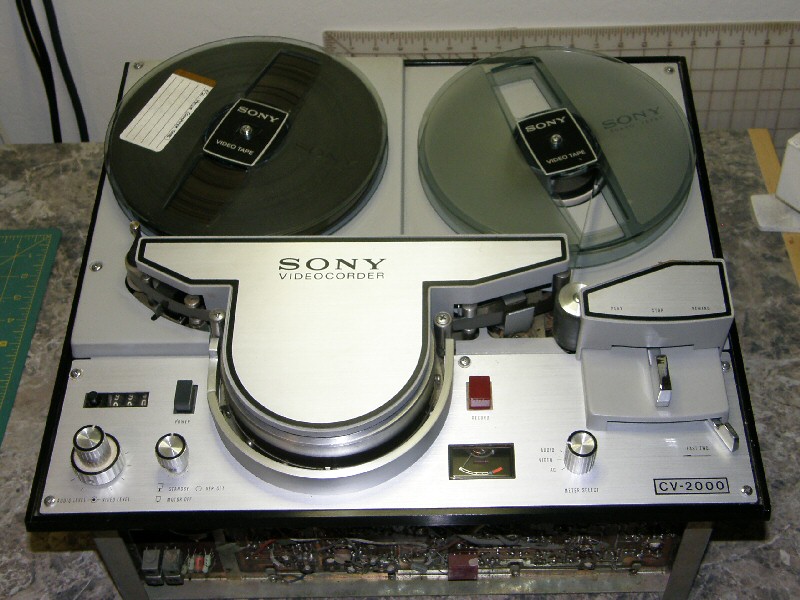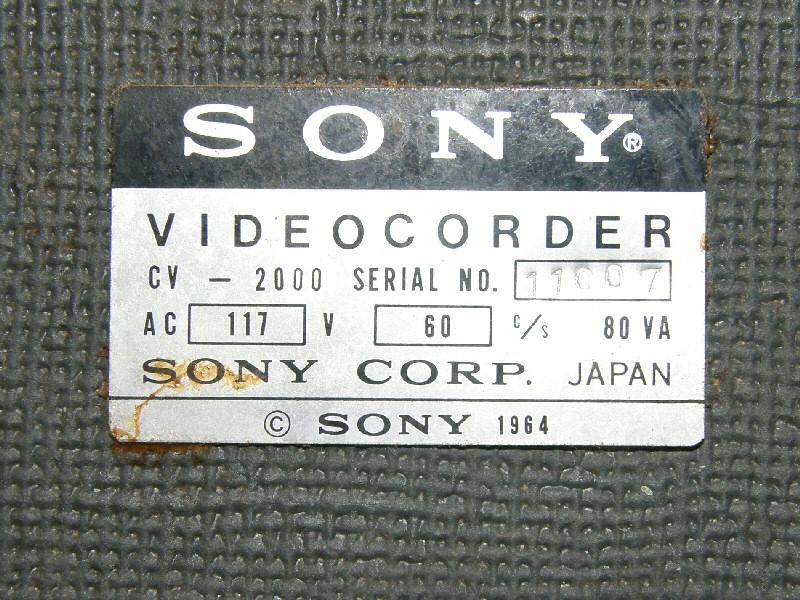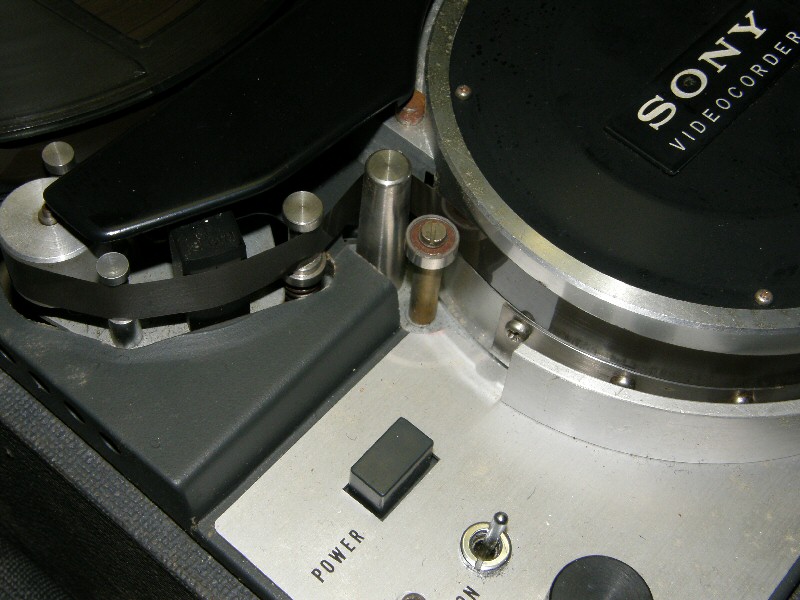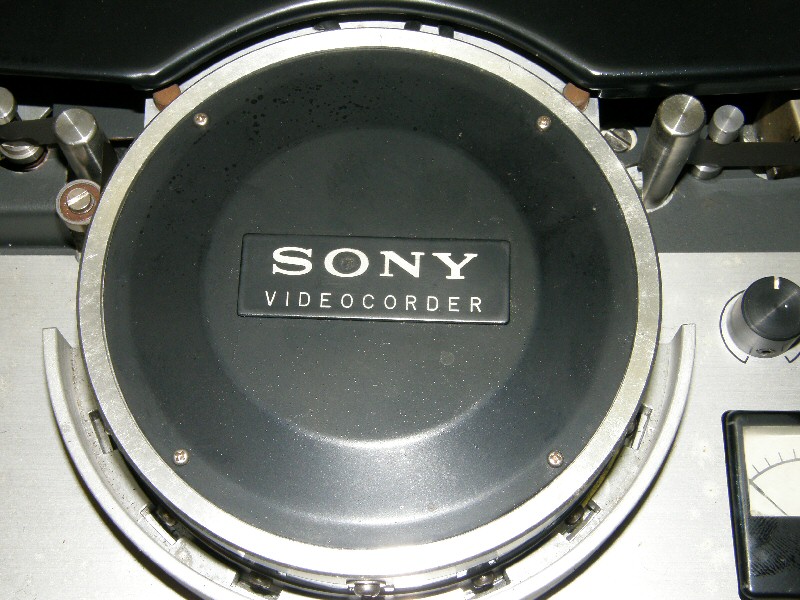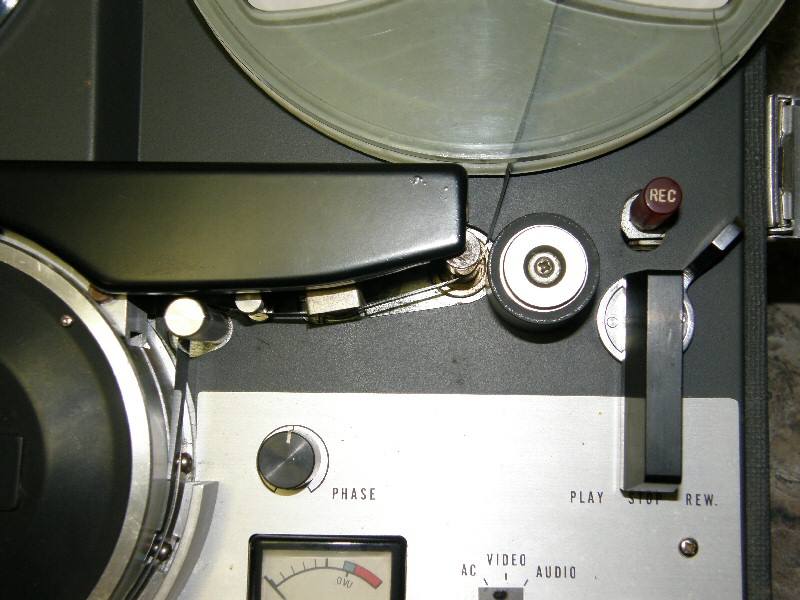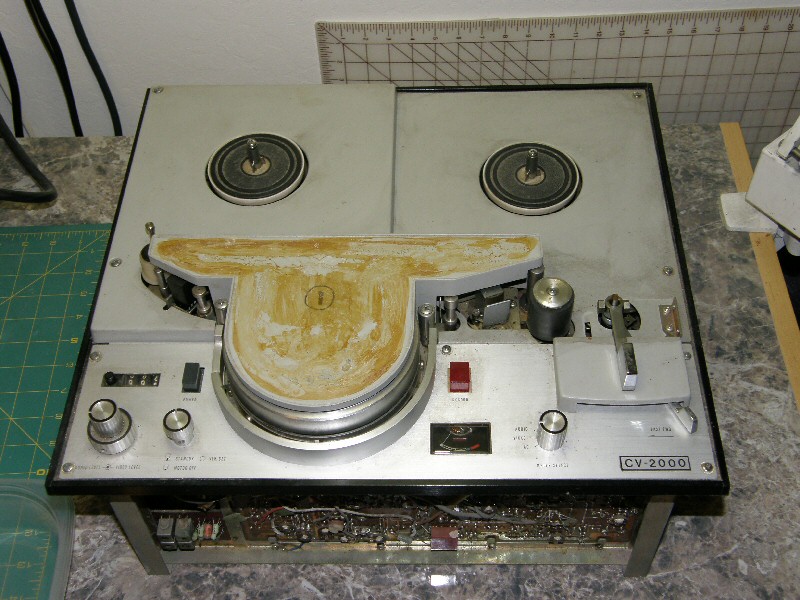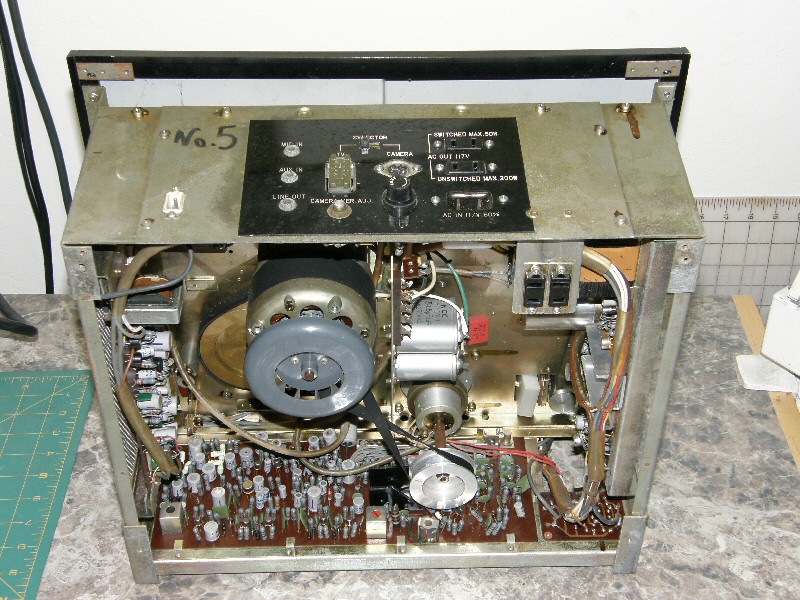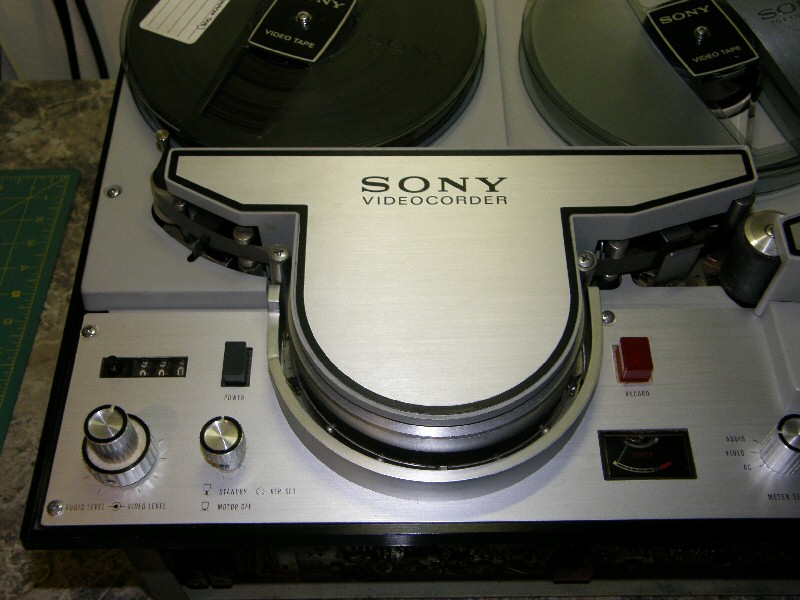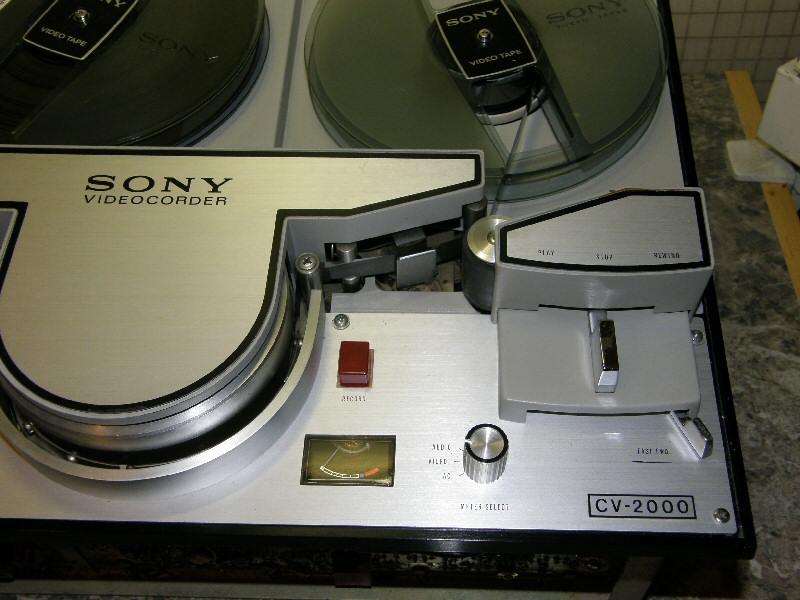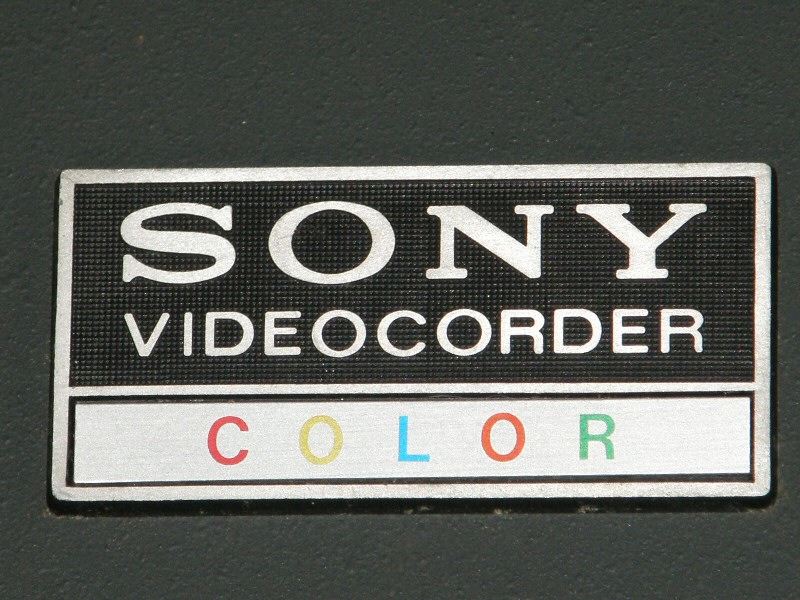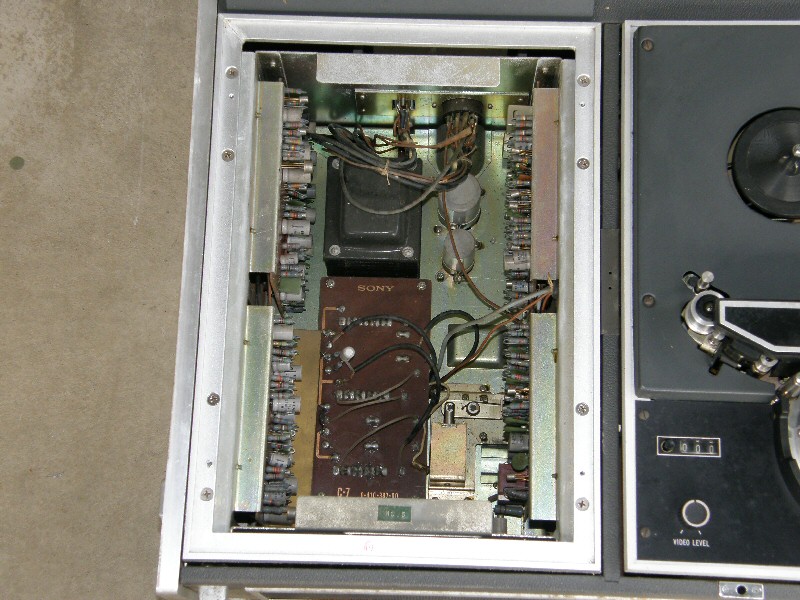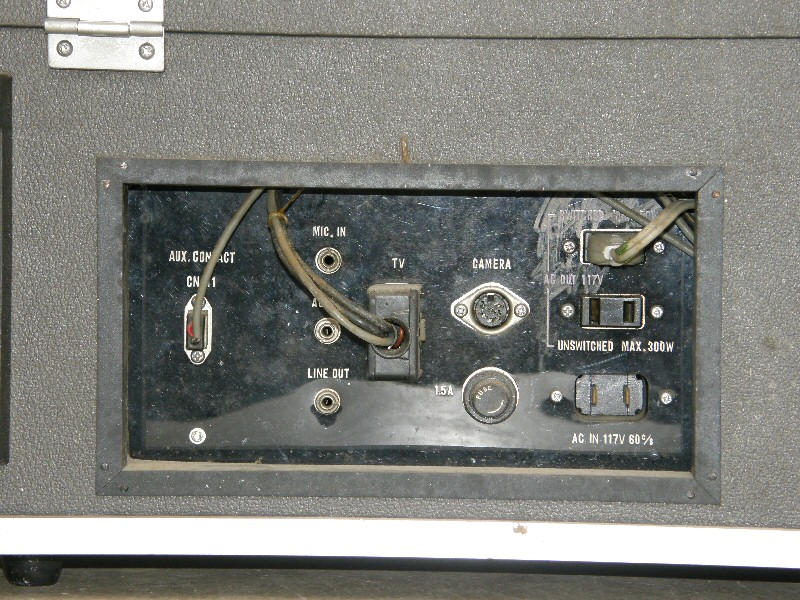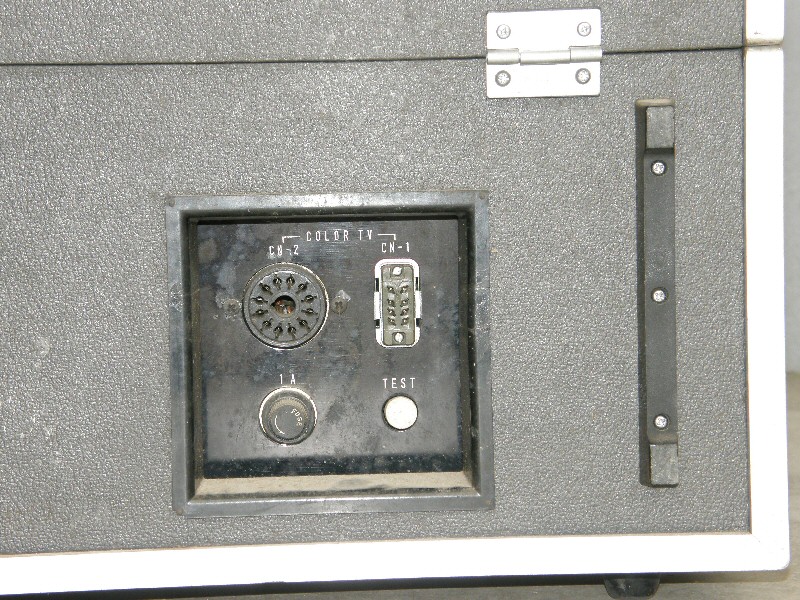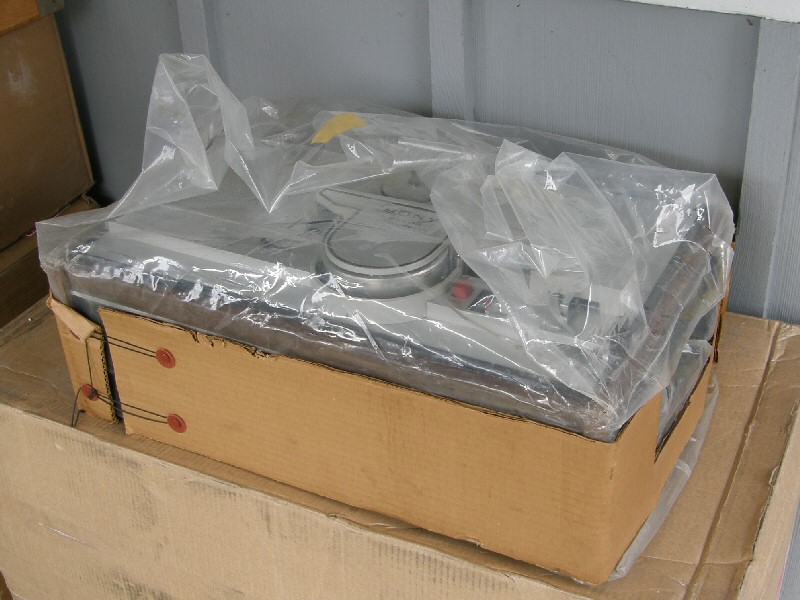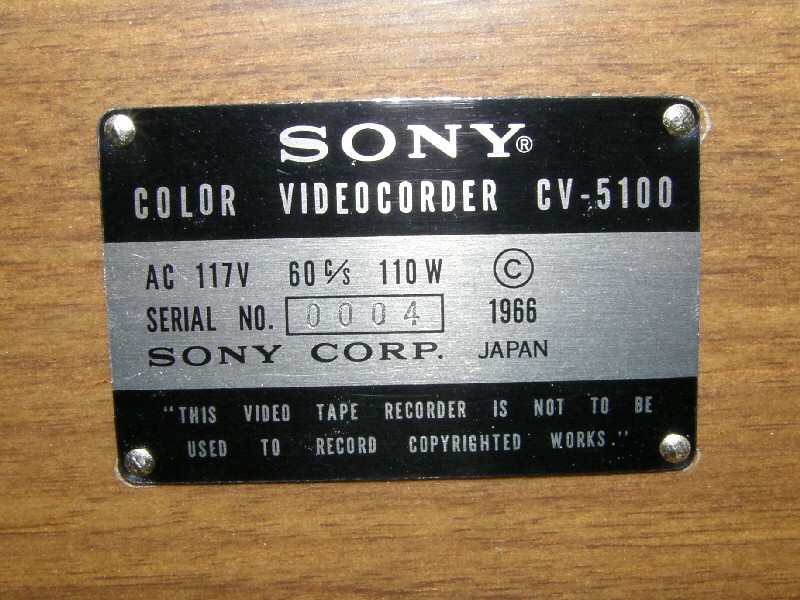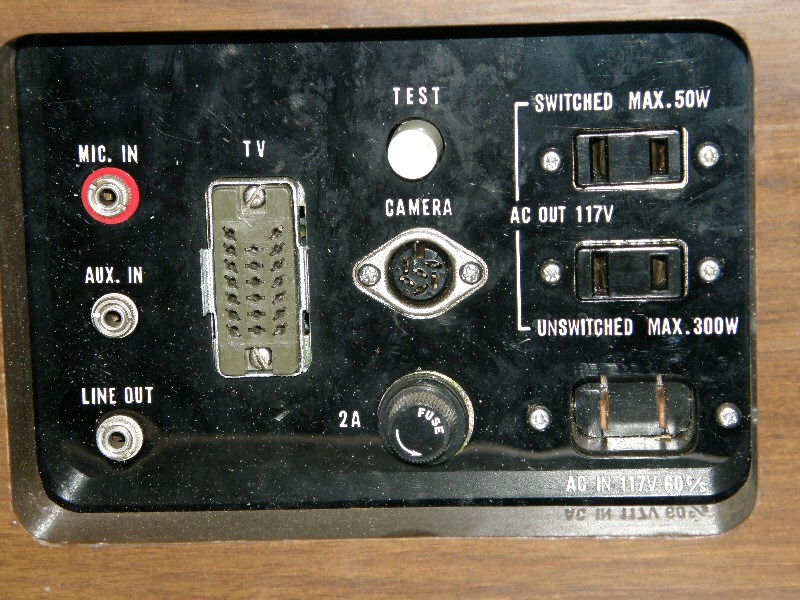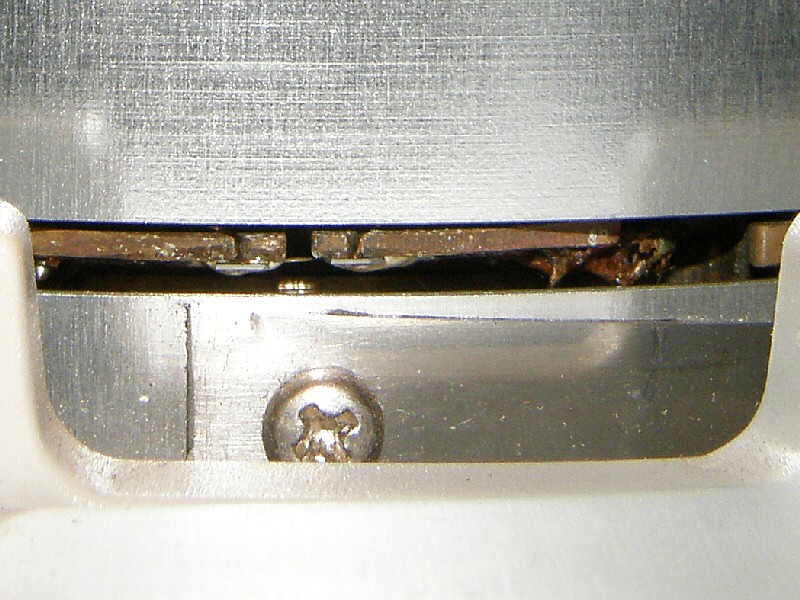LabGuy's World:
Extremely Rare Early Sony Prototype Videocorders
My goodness! After years of establishing its credibility, Labguy's World has come into posession of four of the rarest early home video tape recorders produced by Sony in the early 1960s. All of them use half inch video tape. Two are black and white models and the other two are color. Some of what follows is speculation and rumor. If any readers have more factual information about these machines, please [write to Labguy!]. These Videocorders came from an ex employee of Sony, who was charged with the disposing of obsolete demo units. When this material would come up for disposal, it would typically be offered to the employees or simply tossed. Fortunately, this fellow had the foresight to preserve this equipment. Being a pack rat helped too. As luck would have it, he offered to sell the equipment to me. I accepted. But, it did take several years to save up for this and then travel to New York to pick it up and ship it back to California. This was not a cheap trip! Thanks to the help of a fellow video enthusiast on the east coast, and you know who you are, I was able to get the equipment shipped conveniently and economically. A good friend is far better than treasure. I thank my friend here. 1964: CV-2000 Engineering Prototype Videocorder
These were probably built for sales staff to demonstrate to customers. In the early 1960s, the average person had little idea what uses a Videocorder could be put to. Sony's salesmen had to educate their customers about the usefulness of many innovative products including Videocorders. The Videocorder found its niche in the industrial and educational markets. Consumer demand was the smallest slice of the profit pie. Though many of these were purchased by consumers throughout the 1960s, home video recording would not take off until it could record in color, for two hours minimum, and cost less than $1,000. This threshold would not be reached until the mid 1970s with the arrival of good old Betamax and, shortly thereafter, VHS This CV-2000 prototype appears to be constructed on the chassis of an audio tape recorder. Not visible in the photos, are some small stem extensions on the reel hubs. This is beacuse the hubs were originally accommodating quarter inch tape reels and had to be extended for half inch reels. The tape path is extremely basic. But, this demonstrates the simplicty of the design. I build prototype electronics for a living, and I recognize how complex this machine was to construct. Especially, in the early 1960s! This machine is labeled serial number 7. One of probably a small lot constructed just for demos. If any readers have information on this machine, please [write to Labguy!] 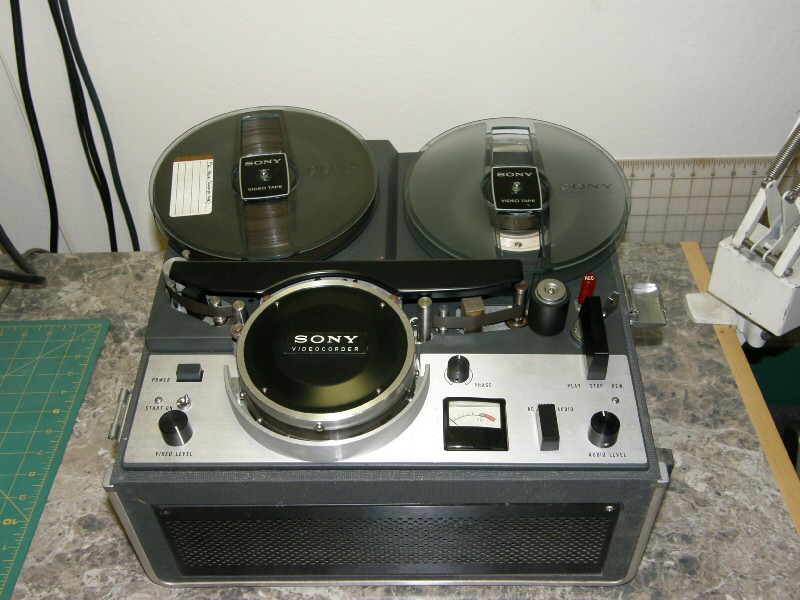
The CV-2000 uses half inch video tape running at 7.5 IPS giving one hour of recording in black and white. It simultaneously records a single (mono) audio track. It uses the skip field method of recording. A 525 line television frame is made up of two fields of 262.5 lines each. The CV-2000 records only the first field of each frame. This is done by sending the record signal to only one of the two video heads. On playback, the the A head scans the track and plays the field 1 video. The B head is set not quite 180 degrees opposite the A head. The B head is also offset slightly in the verical direction in such a way as to scan the field 1 track a second time. The slight deviation from 180 degrees of offset result in the second field being offset by the required half line in order to fake a video field 2! It actually works remarkably well, at only the cost of some vertical resolution. This Videocorder is incredibly compact and light for the era. It measures a petite, 8" high by 15" wide by 13" deep and weighing less than 31 Lbs with tape and take up reel. It has a hinged, removable lid that latches in place. As well as a convenient suit case style handle making this unit very portable! The outer covering is some sort of plastic impregnated coarse cloth over plywood, common for that time period. 1964: CV-2000 Pre-Production Prototype Videocorder
1966: CV-5100 Engineering Prototype Color Videocorder
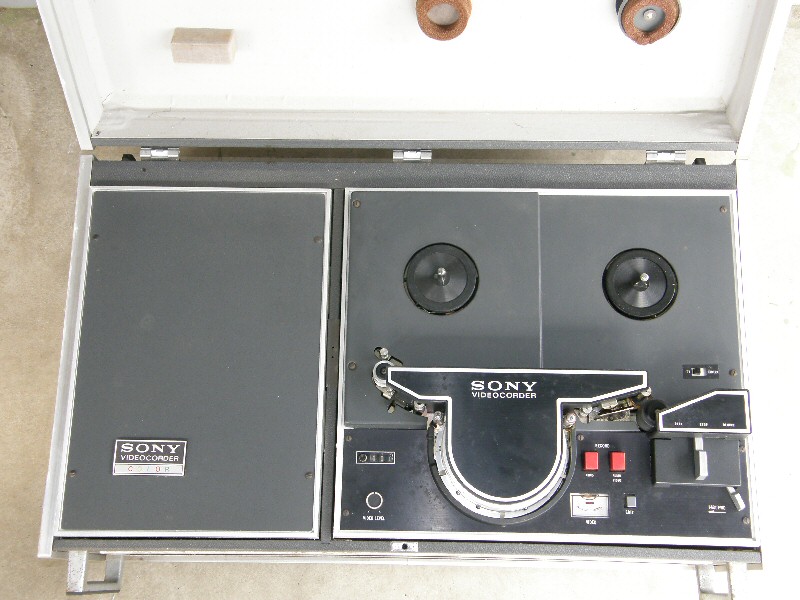
The third little gotcha that made this machine unmarketable was that it had a matching specially modified color monitor. Note the funky round 11 pin connector, in the Connectors 2 photo, for the color monitor. This Videocorder could not be played back on an unmodified color television receiver. It might have played back monochrome on regular BW monitor through the standard 8 pin connector. The videocorder recovers the chroma signal, timebase error and all, and sends it up to the receiver. An internal tracking subcarrier oscillator provided the continuous, 3.579545MHz + time base error, carrier to the monitor's demodulator. In this way, the instantaneous timing error in the video signal was matched perfectly in the recovered carrier. Though both signals are in continuous, absolute error, the error between them is zero. Thus good color playback. In fact, I'll bet these made relatively glorious pictures! 1966: CV-5100 Pre-Production Prototype Color Videocorder
In the third photo is the connector bay. Notice the big multipin connector for the monitor. Since the Videocorder and color TV monitor need to be slaved together, a few extra signals were needed which then required more pins to accomodate them. At this time, I have no idea what the test button does. The camera connector was, most likely, intended for the CVC-2000 black and white vidicon camera used also with the CV-2000. Notice the conspicuous absence of a direct video input. This would imply that color processing was done in the monitor, where the circuits for this purpose already existed. The direct video input would have gone into the back of the receiver / monitor. The last photo clearly shows two of the four video recording and playback heads. Note that the pair of heads set on different planes. This allows them to write or read two tracks simultaneously. That is why the tape speed is higher for this deck then for the CV-2000. The linear tape speed determines the spacing between the video tracks. One head records the luma or Y, the black and white part of the video signal. The second head records chroma or C, the color component of the video signal. The video signal is composed of separte Y/C signals the same as SVHS used some fifteen years later and is still in limited use today. 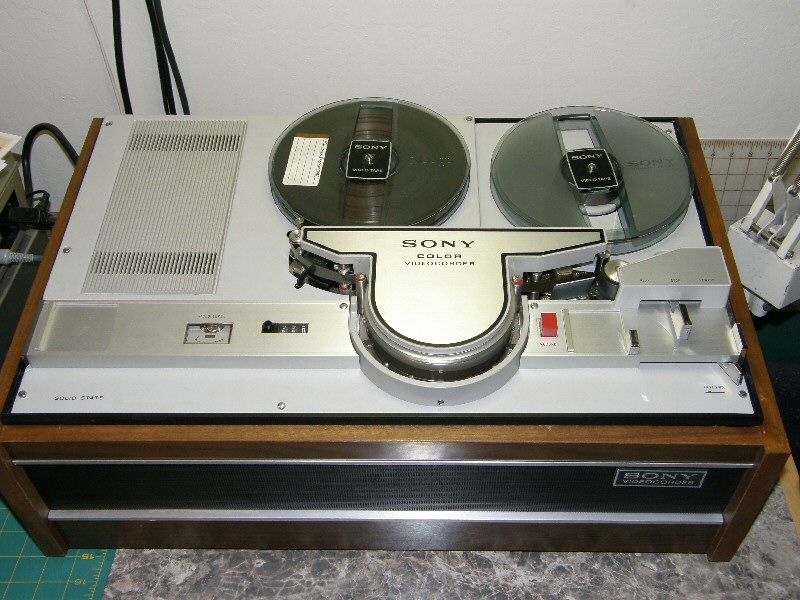
Still looking good after 44 years! The CV-5100 color Videocorder is housed in a beautiful walnut (veneer on plywood) cabinet in the standard Sony style. The top covers and tape transport have a eye catching brushed aluminum styling. The condition of this videocorder is showroom new. It was still in original packaging when I received it. In 1966, Sony brought approximately 25 color CV-5100 Videocorders into the U.S. to show at the IRE (now IEEE) show. These machines were never sold and most of them were ultimately destroyed. Specifications: NTSC Color, 4 video heads, mono audio, 1/2" tape, 12 IPS, 40 minutes on 7" reels / 2400' tapes, weight 66 pounds. One hundred percent solid state. (No vacuum tubes) Specifications come from Electronics World Magazine - November, 1966. Other misc. information provided by Howard Katz. It would be a miracle to find the matching video monitor for this recorder. Does anyone have any general information about this machine, its mating color monitor, or any other features or accessories that may have accompanied this product? Any literature would be great as well. If any readers have information about this machine, please [write to Labguy!] [HOME]..........[VIDEO RECORDERS MUSEUM] Created: August 30, 2010 Last updated: August 29, 2010 |
